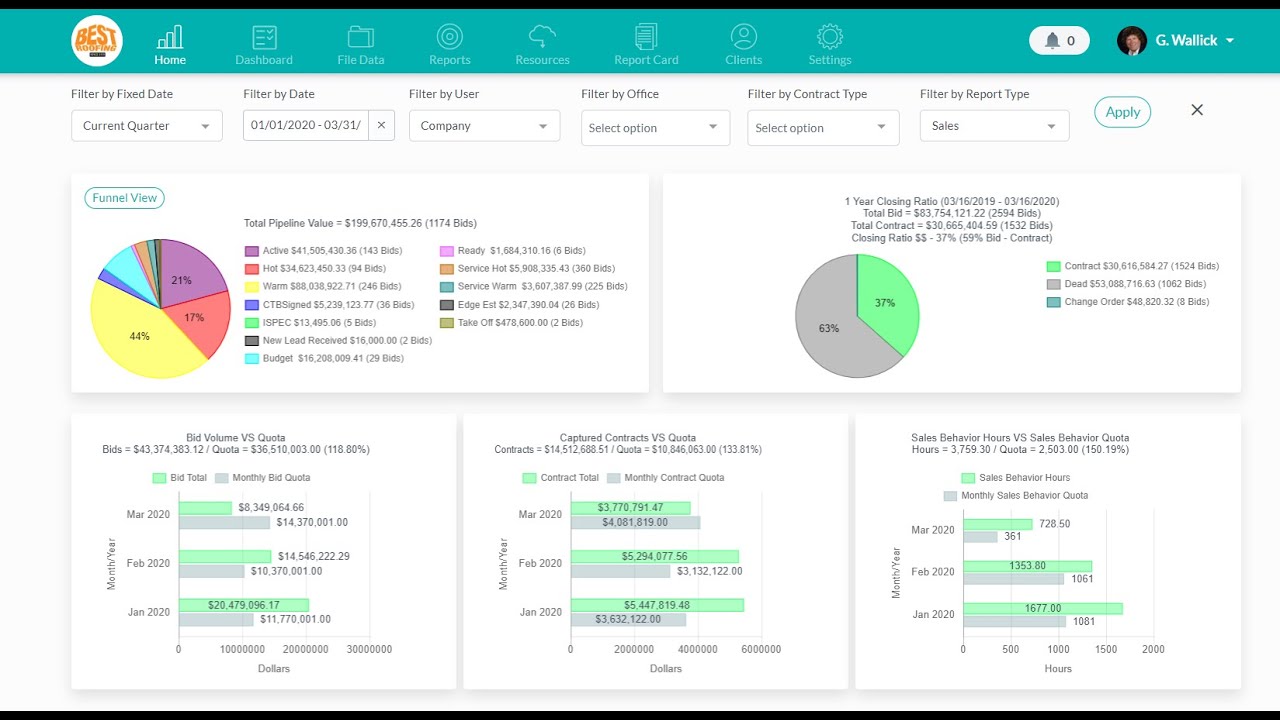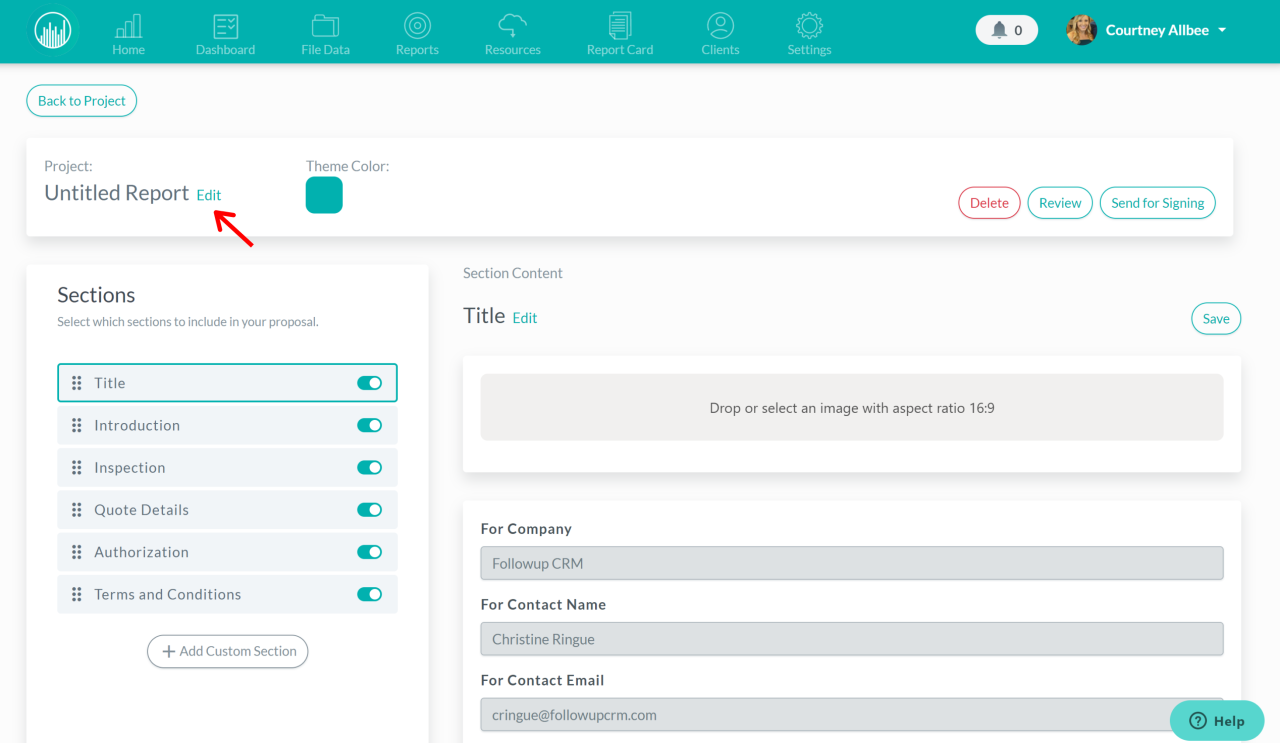Best CRM for follow up is crucial for business success. Effective follow-up is the backbone of strong customer relationships and increased sales conversions. This guide explores key features, selection criteria, and implementation strategies to help you choose and utilize the best CRM for your follow-up needs, maximizing efficiency and boosting your bottom line. We’ll delve into automation, reporting, and best practices to optimize your sales process.
From identifying the ideal features in a CRM to mastering automated sequences and analyzing performance metrics, we’ll provide a comprehensive roadmap for transforming your follow-up strategy. We’ll also address common challenges and offer practical solutions to ensure a smooth transition and successful implementation. The right CRM can significantly improve your team’s productivity and lead to a substantial return on investment.
Defining “Best” CRM for Follow-Up
Selecting the “best” CRM for follow-up depends heavily on individual business needs and priorities. There’s no single perfect solution, but a superior CRM streamlines the process, improves efficiency, and ultimately boosts sales and customer retention. The key is finding a system that seamlessly integrates into your existing workflow and empowers your team to manage interactions effectively.
Key Features of a Superior CRM for Follow-Up
A truly effective CRM for follow-up should possess several crucial features. These features contribute to a more organized, efficient, and ultimately successful follow-up strategy. Without these elements, the CRM becomes merely a digital filing cabinet, rather than a powerful sales and customer relationship tool.
- Automated Reminders and Notifications: Automated reminders prevent tasks from slipping through the cracks. These reminders can be scheduled based on various triggers, such as the last interaction, a specific date, or the completion of a particular task. This ensures timely and consistent follow-up.
- Customizable Workflow and Task Management: The ability to tailor the follow-up process to specific customer segments or individual needs is crucial. This might involve creating different workflows for leads versus existing customers, or adjusting the frequency of contact based on customer engagement.
- Detailed Contact and Interaction History: A comprehensive record of all interactions with a contact is vital for personalized follow-up. This includes notes from phone calls, emails, and meetings, allowing representatives to maintain context and avoid repetitive conversations.
- Reporting and Analytics: Tracking key metrics such as follow-up response rates, conversion rates, and time to close helps assess the effectiveness of the follow-up strategy. Data-driven insights enable continuous improvement and optimization.
- Mobile Accessibility: Modern CRMs need to be accessible from anywhere, at any time. Mobile apps allow representatives to update information, schedule follow-ups, and access contact details even when they’re away from their desks.
Importance of Integration with Other Business Tools
Efficient follow-up often relies on seamless integration with other essential business tools. A siloed CRM hinders productivity and prevents a holistic view of the customer journey. Consider the following examples of beneficial integrations:
- Email Marketing Platforms: Integrating with email marketing platforms allows for automated follow-up emails based on specific actions or triggers within the CRM. This ensures consistent communication and personalized messaging.
- Calendar Applications: Integrating with calendar apps allows for easy scheduling of follow-up calls or meetings directly within the CRM, preventing scheduling conflicts and ensuring timely contact.
- Communication Platforms: Integrating with communication platforms like Slack or Microsoft Teams allows for quick and easy collaboration among team members on follow-up activities.
Comparison of CRM User Experiences in Follow-Up Functionality
Different CRMs offer varying user experiences regarding follow-up functionality. Some CRMs prioritize a streamlined, intuitive interface, making it easy for users to manage follow-up tasks, while others might have a steeper learning curve. For example, Salesforce, while powerful, can be complex for new users, whereas HubSpot offers a more user-friendly interface specifically designed for sales and marketing teams. The optimal choice depends on the technical expertise of the team and the complexity of the follow-up processes.
Ideal Follow-Up Process User Flow Diagram
The following describes an ideal follow-up process within a CRM, illustrating a typical user flow. Imagine a visual diagram here, showing a flowchart with the following steps:
1. Lead/Customer Interaction
A new lead is generated or an existing customer interacts with the business.
2. Data Entry
Relevant information is captured and entered into the CRM.
3. Follow-Up Task Creation
A follow-up task is automatically created or manually added, with a specific due date and assigned to a team member.
4. Reminder Notification
The CRM sends automated reminders to the assigned team member.
5. Follow-Up Action
The team member completes the follow-up action (e.g., sends an email, makes a phone call).
6. Interaction Logging
Details of the interaction are recorded within the CRM.
7. Status Update
The follow-up task is marked as complete.
8. Reporting and Analysis
The CRM generates reports on follow-up performance, enabling data-driven improvements.
CRM Features for Effective Follow-Up: Best Crm For Follow Up

Choosing the right CRM is crucial for efficient sales and customer service, and a key aspect of this is effective follow-up. The features a CRM offers directly impact your ability to nurture leads, retain customers, and ultimately, boost your bottom line. This section delves into specific CRM features that significantly enhance your follow-up processes.
Automated Follow-Up Sequences, Best crm for follow up
Automated follow-up sequences are a cornerstone of efficient CRM use. These sequences trigger pre-defined actions based on specific customer interactions or time intervals. They ensure consistent communication without manual intervention, freeing up your team to focus on other tasks. Different CRMs offer varying levels of customization, but common types of sequences include email drip campaigns, SMS sequences, and automated task assignments.
For example, a new lead could trigger an email series introducing your company and product, followed by a personalized email a week later, and a phone call a week after that. Another example could be a post-purchase sequence sending order confirmation, shipping updates, and product usage tips. The key is to create relevant and timely sequences tailored to each customer segment.
CRM Task Management and Consistent Follow-Up
Task management within a CRM directly supports consistent follow-up. Features such as task assignment, due dates, reminders, and progress tracking ensure that no follow-up action falls through the cracks. By assigning tasks to specific team members and setting clear deadlines, the CRM provides a centralized system for managing all follow-up activities. This eliminates the reliance on individual memory and ensures accountability.
For instance, a sales representative can assign themselves tasks to call a prospect after a meeting, send a follow-up email after a demo, or schedule a check-in call with an existing client. Visual dashboards within the task management section often allow for easy monitoring of progress and identification of any potential delays.
Reporting and Analytics for Follow-Up Effectiveness
CRMs provide robust reporting and analytics tools to measure the success of your follow-up strategies. Metrics such as response rates to email sequences, conversion rates from leads to customers, and the average time taken to close a deal provide valuable insights into what’s working and what needs improvement. For example, a report might show that email sequences with personalized subject lines have a significantly higher open rate compared to generic ones.
This data allows you to refine your strategies and optimize your follow-up process for maximum efficiency. Analyzing the performance of different follow-up methods allows for data-driven decisions to improve overall effectiveness.
Optimizing Follow-Up with Reminders and Notifications
Effective use of CRM reminders and notifications is critical for timely follow-up. CRMs typically offer customizable reminders via email, SMS, or in-app notifications, allowing you to schedule these alerts based on specific events or time intervals. For instance, a notification could alert a sales representative about an upcoming meeting, a pending task, or a customer’s birthday. The key is to strike a balance – enough reminders to ensure timely action, but not so many that they become overwhelming.
Strategic use of notifications minimizes missed opportunities and maximizes efficiency by prompting timely responses and actions. A well-designed notification system contributes significantly to a smooth and productive workflow, minimizing missed opportunities and enhancing customer engagement.
CRM Selection Criteria Based on Follow-Up Needs

Choosing the right CRM for your follow-up processes is crucial for maximizing efficiency and achieving your sales and customer service goals. The ideal CRM will seamlessly integrate with your existing workflows and provide the tools necessary to nurture leads and maintain strong customer relationships. Several key factors should guide your decision-making process.
Decision Tree for CRM Selection
A structured approach to CRM selection is vital. This decision tree helps navigate the choices based on specific follow-up requirements.
Start
|
V
Is automated follow-up crucial?
Yes No
| |
V V
Requires extensive reporting?
Focus on simple task management?
| |
V V
Select CRM with robust automation Select CRM with basic automation
and reporting (e.g., Salesforce, HubSpot) and reporting (e.g., Zoho CRM,
Freshsales)
|
V
Budget considerations?
|
V
Choose CRM within budget constraints.
CRM Comparison Based on Follow-Up Capabilities
This table compares three popular CRMs based on their features relevant to follow-up management. Pricing can vary greatly depending on the number of users and features selected.
| CRM Name | Automated Features | Reporting Capabilities | Pricing |
|---|---|---|---|
| Salesforce | Automated email sequences, task reminders, lead scoring, workflow automation | Customizable dashboards, sales forecasting, lead conversion rate analysis, detailed activity tracking | Starts at around $25/user/month, with higher tiers for more features |
| HubSpot | Automated email sequences, workflows, chatbot integration, social media monitoring | Comprehensive reporting and analytics, including lead source tracking, deal progression analysis, ROI measurement | Offers a free plan with limited features, paid plans start at around $450/month |
| Zoho CRM | Automated email sequences, task reminders, workflow automation, event triggers | Customizable dashboards, sales performance reports, lead conversion analysis | Offers a free plan with limited features, paid plans start at around $14/user/month |
CRM Scalability and Increasing Follow-Up Demands
Scalability is a critical consideration. As your business grows and your follow-up needs increase, your chosen CRM must be able to handle the expanding volume of data and users. Cloud-based CRMs generally offer better scalability than on-premise solutions, allowing for seamless expansion as your business requirements evolve. For example, Salesforce’s robust infrastructure can easily accommodate a rapidly growing sales team and increasing data volume, unlike a smaller, less flexible system that might struggle to maintain performance under similar pressure.
Evaluating Customer Support for Follow-Up Issues
Effective customer support is crucial. Before committing to a CRM, evaluate the vendor’s support capabilities. Consider factors such as: response times, availability of different support channels (phone, email, chat), knowledge base resources, and the overall helpfulness and expertise of the support team. Testing the support system by submitting a simulated follow-up-related issue can provide valuable insights into their responsiveness and problem-solving skills.
For instance, you might submit a query regarding integrating your CRM’s automation with a specific marketing platform. The vendor’s response time, clarity of explanation, and ability to resolve the issue should all be assessed.
Implementing a CRM for Optimized Follow-Up

Successfully implementing a CRM for optimized follow-up involves a strategic approach encompassing data migration, automation setup, communication strategy development, and comprehensive team training. A well-executed implementation ensures your CRM becomes a powerful tool for boosting sales and enhancing customer relationships.
Migrating Existing Customer Data
The process of migrating existing customer data into a new CRM requires careful planning and execution to minimize disruption and ensure data integrity. Begin by thoroughly cleaning and standardizing your existing data, resolving inconsistencies and duplicates. This foundational step ensures accurate reporting and efficient follow-up. Next, map your existing data fields to the corresponding fields in the new CRM.
This mapping process is crucial for a smooth transfer and prevents data loss. Finally, utilize the CRM’s import function, carefully reviewing the import process for errors. Post-import, conduct a thorough data validation to ensure accuracy and completeness. Consider using a phased approach for large datasets, migrating data in batches to minimize system impact.
Setting Up Automated Follow-Up Sequences
Automated follow-up sequences significantly enhance efficiency and consistency in customer interactions. First, define your target audience segments and their respective follow-up needs. This segmentation ensures personalized and relevant communication. Next, within your chosen CRM, create automated workflows or sequences triggered by specific events, such as lead generation, purchase, or support ticket submission. Each sequence should include a series of timed emails or other communication methods (e.g., SMS, in-app messages) designed to nurture leads, provide support, or upsell/cross-sell products.
Remember to monitor the performance of your automated sequences and make adjustments based on engagement metrics. A/B testing different email subject lines and content can significantly improve results. For example, a sequence for new leads might include a welcome email, a product demo invitation, and a case study highlighting customer success.
Effective Email Templates and Communication Strategies
Effective email templates and communication strategies are essential for successful follow-up. Templates should be concise, personalized, and value-driven, focusing on the customer’s needs and pain points. For example, a follow-up email after a sales call could summarize key discussion points and offer additional resources. Another example might be a post-purchase email thanking the customer and providing support resources.
Remember to maintain a consistent brand voice and tone across all communications. A/B testing different subject lines and email copy can help optimize open and click-through rates. Consider incorporating personalization tokens to address customers by name and reference specific interactions. For instance, an email could say, “Hi [Customer Name], following up on our conversation about [Product/Service], I wanted to share…”
Training Sales and Support Teams on CRM Usage
Comprehensive training is vital for ensuring optimal CRM adoption and effective follow-up. Begin with introductory sessions covering the CRM’s basic functionalities and navigation. Then, focus on specific training modules related to follow-up procedures, including creating and managing automated sequences, utilizing email templates, and interpreting CRM data for insights. Provide hands-on practice sessions and role-playing scenarios to simulate real-world situations.
Ongoing support and refresher training should be provided to reinforce best practices and address any challenges. Consider using interactive tutorials, videos, and knowledge base articles to supplement formal training sessions. Tracking key performance indicators (KPIs) related to CRM usage and follow-up effectiveness will help measure training success and identify areas for improvement.
Measuring the Success of CRM Follow-Up Strategies
Implementing a CRM for follow-up is only half the battle; understanding its effectiveness is crucial for maximizing ROI. Regularly monitoring key metrics allows businesses to identify what’s working, what’s not, and refine their strategies for optimal performance. This involves tracking various data points to gain a holistic view of follow-up success and its impact on sales.
CRM Follow-Up Dashboard Design
A well-designed dashboard provides a clear, concise overview of key performance indicators (KPIs). This visual representation allows for quick identification of trends and areas needing attention. An effective dashboard might include sections displaying lead source performance, contact engagement rates (email opens, call connections), conversion rates at each stage of the sales funnel, and the average deal size closed after follow-up.
A visual representation, such as a bar chart showing conversion rates by follow-up method (email, phone, in-person) or a line graph illustrating the trend of conversion rates over time, would be highly beneficial. Color-coding could highlight areas exceeding or falling short of targets, enabling quick identification of high-performing and underperforming aspects of the follow-up process.
Key Performance Indicators (KPIs) for Follow-Up Impact on Sales
Three crucial KPIs to monitor the impact of follow-up on sales conversion rates are: Lead Response Time, measuring the time elapsed between initial contact and the first follow-up; Conversion Rate, tracking the percentage of leads converting into customers after follow-up; and Average Revenue per Customer, analyzing the revenue generated per customer acquired through CRM-driven follow-up. For example, a company might aim for a lead response time under 24 hours, a conversion rate of 20% from qualified leads, and an average revenue per customer of $5,000.
Tracking these KPIs allows for comparison against targets, identifying areas for improvement, and measuring the overall effectiveness of the follow-up process.
Analyzing CRM Data for Follow-Up Process Improvement
Analyzing CRM data involves identifying patterns and trends within the collected information to pinpoint areas needing improvement. This can involve segmenting leads based on demographics, behavior, or engagement levels to tailor follow-up strategies for each group. For instance, analyzing email open and click-through rates can help optimize email content and scheduling. Similarly, reviewing call duration and outcomes can highlight areas for improvement in sales calls.
Identifying bottlenecks in the sales funnel, such as low conversion rates at a specific stage, indicates the need for adjustments in the follow-up strategy at that particular point. Analyzing the data allows for data-driven decision-making, resulting in more effective and efficient follow-up processes.
Checklist for Regularly Reviewing and Optimizing CRM Follow-Up Strategies
Regular review and optimization are vital for maintaining the effectiveness of CRM follow-up strategies. A checklist should include:
- Review KPIs: Analyze lead response time, conversion rates, and average revenue per customer against set targets.
- Analyze Lead Segmentation: Evaluate the effectiveness of different follow-up strategies across various lead segments.
- Assess Follow-Up Methods: Determine the effectiveness of email, phone calls, and other communication methods.
- Identify Bottlenecks: Pinpoint stages in the sales funnel where conversion rates are low and require attention.
- Update Follow-Up Processes: Adjust strategies based on data analysis to improve efficiency and conversion rates.
- Train Sales Team: Ensure the sales team is using the CRM effectively and consistently following established processes.
- Gather Feedback: Collect feedback from sales representatives to identify areas for improvement in the CRM and follow-up strategies.
This checklist ensures a proactive approach to refining the CRM follow-up process, maximizing its impact on sales performance.
Outcome Summary

Selecting and implementing the best CRM for follow-up is a strategic decision that can significantly impact your business outcomes. By carefully considering the factors Artikeld in this guide – from essential features and integration capabilities to robust reporting and scalable solutions – you can confidently choose a system that aligns with your specific needs and drives sustainable growth. Remember that ongoing monitoring and optimization are key to maximizing the ROI of your chosen CRM and ensuring its continued effectiveness in supporting your sales and customer service efforts.
Common Queries
What is the average cost of a CRM with robust follow-up features?
CRM pricing varies widely depending on features, users, and integrations. Expect to find options ranging from free plans with limited functionality to enterprise solutions costing thousands of dollars per month.
How can I ensure my CRM data is secure and compliant?
Choose a CRM provider with strong security measures, including data encryption, access controls, and compliance certifications (e.g., GDPR, HIPAA). Regularly review your CRM’s security settings and data backup procedures.
Can a CRM integrate with my existing marketing automation platform?
Many CRMs offer robust integration capabilities with popular marketing automation platforms. Check the specific integrations offered by your chosen CRM to ensure compatibility with your existing tools.
How long does it typically take to implement a new CRM and train my team?
Implementation time varies depending on the CRM’s complexity and your team’s size. Plan for several weeks to months, including data migration, configuration, and thorough training sessions.

